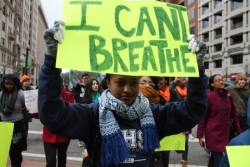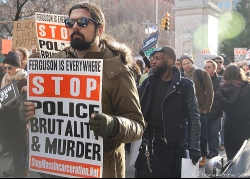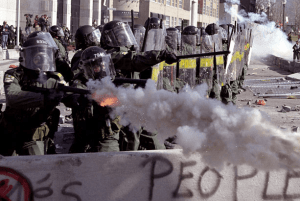Will Grand Jury Minutes Be Released in Eric Garner Case?
Last year, an African American man named Eric Garner was approached by law enforcement officers for allegedly selling illegal cigarettes. When confronted, the New Yorker placed his hands in the air in defiance and told the officers, not to touch him. The officers proceeded to arrest him. After Garner refused to cooperate, he was placed in a chokehold. Gasping for air, he told the officers, “I can’t breathe.” Shortly after, he lost consciousness and was pronounced dead at a nearby hospital.
This incident has troubled the nation as fears regarding excessive police force capture the attention of us all. Our previous article discussed the implications of Michael Brown’s death in Ferguson. A similar grand jury investigation commenced in this case after the public demanded justice for the now deceased Garner. After deliberations, the grand jury declined to indict the police officer who apparently choked Garner to death. Although similar occurrences have transpired in the past, there are several distinguishing characteristics that are the same in both Brown and Garner’s cases: a Caucasian officer uses lethal force against an unarmed African American, causing death. Many feel that a federal investigation is necessary to serve justice.
As a result of the nationwide publicity garnered by the Brown and Garner cases, a judge is considering the release of the grand jury minutes from the Garner investigation. Grand jury minutes are secret and are made available only by the order of a judge. Historically, grand jury proceedings were kept a secret to protect the grand jury from the abuses of the Crown and also because the doctrine of grand jury secrecy was never envisioned as an instrument to be invoked or waived as the prosecution saw fit. A reference to the “Crown” may seem odd given our current government, but many of our laws and practices originate from colonial America and English common law. It is exactly this type of outdated reasoning that has led some to speculate that New York will revise or abolish this longstanding practice of secrecy. While some are in favor of increased transparency, others are concerned that this change will undermine the credibility and faith in local district attorneys.
A judge has set a date for ruling on the release of the Garner grand jury records. In making his determination, the judge will have several key factors to consider. First, the judge will have to consider the impact of releasing the materials will have on the general public. Will the release spurn additional protests? Could violent riots ensue? Second, the judge will have to consider the precedent. Stare decisis is the phrase that describes a judge’s adherence to previous decisions. If an issue is brought before the court that has been previously ruled on, the judge will typically rely upon the previous decision to rule again. While this promotes continuity and practicality, it also has the effect of causing injustice and the inefficiency of bad decisions. Should a judge rely upon a previous ruling if a poor decision was made? The judge will likely have to depart from previous rulings if grand jury minutes are released. Third, the judge will contemplate whether releasing the minutes will encourage Governor Cuomo to suspend grand jury secrecy in cases where people died as a result of clashes with police. And finally, the judge will have to determine whether there is a basis in the law for releasing the grand jury minutes.





